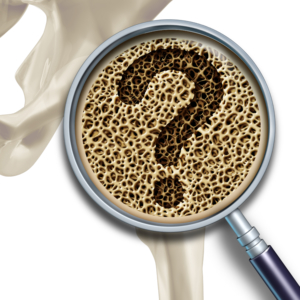Osteoporosis is the disease characterized by a low density of bone tissues. Those suffering from osteoporosis therefore have a particular bone fragility that makes them particularly vulnerable to fractures.
Osteoporosis and bone fragility
 Osteoporosis is a disease that particularly affects women, especially in the age group that exceeds 50 years, particularly in the menopausal phase. Scientific literature has shown that one in two women and one in five men may experience a bone fracture due to the presence of osteoporosis.
Osteoporosis is a disease that particularly affects women, especially in the age group that exceeds 50 years, particularly in the menopausal phase. Scientific literature has shown that one in two women and one in five men may experience a bone fracture due to the presence of osteoporosis.
Bone density and thickness are the result of a delicate balance between the action of osteoclasts and that of osteoblasts. The former are at the base of the bone resorption process, ie they are the cause of a gradual thinning of the bone. The latter, the osteoblasts, are instead the basis of the continuous process of bone regeneration.
The balance between the activity of these two types of bone cells determines the natural density of the bone, an alteration in this sense can therefore determine the increase in the porosity of the bone and therefore its fragility.
Temporomandibular bones are not excluded from this process and are also affected by the disease.
Bone fragility and implantology
Dentistry has always included osteoporosis among the contraindications of implantology. In addition to this indication, the scientific community has hypothesized, for patients suffering from this pathology who have undergone implant surgery, the risk of encountering, with a much greater probability, an implant failure.
The hypotheses have found a partial clinical response, as shown by the study published in January 2019 in the Journal of Dental Research. The clinical study was carried out on menopausal women who had been diagnosed with systemic osteoporosis and who were about to undergo implant surgery.
In a first phase, analyzes were performed on the bone density of the subjects involved, the measurement led to the classification of two groups:
- group O (group with osteoporosis) with a T-score ≤-2;
- group C (control group) with a T-score of ≥-1.
After this first measurement phase, the subjects involved, 48 patients with an average age of 67, underwent implant surgery. A total of 148 implants with biphasic loading were inserted. Of the 48 patients, 20 belonged to group O and 28 to group C.
The implants inserted were monitored and evaluated for a duration of 5 years.
Results on the correlation between osteoporosis and implant failure
Research has shown that after five years the implant success rate for the patients involved is 96.5%, with a greater failure rate for the subjects of group O. However, the data is encouraging: the failure rate is low and this shows that theimplantology in patients with systemic osteoporosis does not present particular criticalities.
An important element for scientific research and also for all patients who are faced with osteoporosis following menopause and who do not want to give up their natural smile again.
















